Understanding Data Warehouses and Data Lakes
A data warehouse is a centralized, structured platform designed for handling queries and analytics, usually by consolidating data from various sources. Typically, organizations use solutions like Snowflake to centralize information such as sales, marketing, and CRM data. Conversely, a data lake offers a more flexible repository, capable of accommodating structured, semi-structured, and unstructured data—think raw logs, IoT records, or social media feeds. For instance, Azure Data Lake can store diverse data types ready for future processing or analysis.
- Data Warehouse: Best for structured, analytics-ready information with consistent schema.
- Data Lake: Designed for raw or varied formats, supporting schema-on-read for maximum flexibility.

ETL vs. ELT: Key Data Transformation Approaches
ETL (Extract, Transform, Load) is a data integration process where information is collected from source systems, reshaped as needed, and then deposited into a destination like a data warehouse. For instance, teams might use Azure Data Factory to migrate data from an on-premise SQL Server, reshape it, and load it into Azure Synapse for reporting.
ELT (Extract, Load, Transform) reverses the order: data is extracted and loaded into a destination repository (like a lake) first, with transformations applied afterward, harnessing the destination's scalable compute (e.g., with Apache Spark for high-volume processing).
Batch Processing vs. Stream Processing
Batch processing handles data in sets, executing tasks according to a schedule. It's ideal for scenarios like processing daily retail transactions. Stream processing, meanwhile, evaluates data in real-time for use cases such as monitoring live financial transactions for potential fraud using Kafka and Flink.
- Batch: Best for historical analysis and scheduled aggregation.
- Stream: Essential for reactive, low-latency needs like real-time detection.
Managing Schema Changes Dynamically
Schema evolution allows your data infrastructure to accommodate changes, such as adding new columns or adjusting field types, without breaking data flows. Apache Spark, for instance, can infer or adapt schemas automatically to include new data attributes when loading updated files.
Sharding vs. Partitioning: Scalability Strategies
| Technique | Description | Example |
|---|---|---|
| Sharding | Splitting data horizontally across multiple independent databases or servers. | User records distributed across multiple Postgres databases. |
| Partitioning | Dividing data within a single storage system for performance optimization. | Organizing S3 files by year/month/day for faster queries with AWS Athena. |
Metadata Management and Data Lineage Tools
- Metadata Management: Tools like Hive Metastore or AWS Glue Catalog handle definitions for datasets, making discovery and schema tracking easier.
- Data Lineage: Solutions such as Apache Atlas and DataHub trace data's journey from origin through processing, simplifying audits and debugging.
What Is a Data Lakehouse?
A data lakehouse merges the flexibility of data lakes with the structured advantages of warehouses. Platforms like Delta Lake on Azure allow teams to analyze both unstructured and structured data via a single architecture—supporting both batch and real-time analytics without data duplication.
Promoting Data Quality in Pipelines
Maintaining accurate, consistent, and complete datasets is crucial. Tools like Great Expectations can automate checks for missing values, duplicate rows, or incorrect formats before data lands in analytical systems.
Change Data Capture: Keeping Systems in Sync
Change Data Capture (CDC) monitors source systems for inserts, updates, and deletes, propagating changes quickly to downstream apps. For example, Debezium can track updates in a MySQL database, pushing changes to Kafka for consumption by analytics tools—enabling up-to-date dashboards and reports.
Coordinating Data Workflows
Workflow orchestration handles the scheduling, sequencing, and monitoring of complex data pipelines. Apache Airflow—a popular orchestrator—uses tasks organized in Directed Acyclic Graphs (DAGs) to automate, track, and retry data processing tasks, ensuring reliability and sequencing.
Data Anonymization: Safeguarding Personal Information
- Definition: Modifying or removing details that identify individuals in records (PII), so teams can analyze data safely.
- Common techniques:
- Masking important fields (replacing names with tokens).
- Aggregation (grouping data to prevent identification).
- Tokenization (using surrogate values in place of sensitive fields).
- Differential Privacy (adding statistical noise).
Anonymization ensures privacy, regulatory compliance (GDPR/CCPA/HIPAA), system security, and user trust.
OLAP vs. OLTP Systems
| OLAP | OLTP |
|---|---|
| Designed for complex analytics on historical data. Warehouse-based, multidimensional queries, optimized for reports and dashboards. | Handles high volumes of real-time transactions. Database-centric, optimized for inserts/updates and daily operations. |
| Example: Analyzing five years of retail sales data for trends. | Example: Processing inventory and payments on an e-commerce platform. |
Columnar Storage and Its Advantages
Columnar formats (like Parquet) store each field's values together, rather than entire records, making them ideal for big data analytics:
- Efficient when running aggregations on select fields.
- Reduces storage costs due to higher compression rates.
- Faster retrieval for analytical workloads in tools like Athena or BigQuery.
Building a Scalable Storage Solution
- Utilize elastic cloud storage platforms (e.g., S3, Azure Blob, Google Cloud Storage).
- Automate data lifecycle management—archiving cold data to lower-cost storage.
- Segment data by partitions (such as time or location) for easier access and performance scaling.
- Replicate critical data to enhance durability and minimize risk of data loss.
What Is a Data Pipeline?
A data pipeline automates the flow of information from source to destination—including extraction, cleansing, transformation, and loading. For example, a retailer may automate collecting store sales each day, refine the data with Apache Airflow, and store it in Snowflake for analysis.
- Determine sources/destinations.
- Define transformation logic (cleaning, validating, enriching).
- Pick orchestration and monitoring solutions.
- Design with resilience and scalability in mind with failure recovery and retries.
- Continuously monitor performance and tune as needed.
Ensuring High Availability with Data Replication
Replication involves duplicating data to multiple sites or servers, keeping data accessible even during outages. For example, Azure Cosmos DB can replicate information to several regions, automatically routing requests to a healthy region if another goes down.
- Synchronous: Replicas are updated in real-time for consistency (used in banking systems).
- Asynchronous: Primary data is written first, then copied—improving speed but risking temporary inconsistencies (common in global e-commerce).
Replication supports disaster recovery, high availability, and faster data access across geographies.
Benefits of Serverless Data Processing
Serverless data processing lets you run data jobs without managing infrastructure. For instance, using AWS Glue, resources scale automatically based on job needs, eliminating the hassle of provisioning and maintaining servers. Benefits include:
- No server management overhead
- Automatic scaling with demand spikes
- Cost savings by paying only for active execution time
Ensuring Data Quality Through Validation
Validation routines act as a safeguard to confirm incoming data meets expectations. This can involve:
- Schema conformance (ensuring fields exist and have correct types)
- Boundary checks (e.g., transaction amounts aren't negative)
- Ensuring key fields are always populated
- Verifying compliance with business rules
Improving SQL Query Performance
- Apply indexes to frequently filtered columns for faster searches.
- Avoid SELECT *: Request only necessary fields to reduce I/O.
- Simplify joins where possible, leveraging indexed columns.
- Write WHERE clauses to leverage indexes and avoid functions on columns.
- Review execution plans to pinpoint slow operations, then optimize accordingly.
Methods for Implementing Change Data Capture
- Log-Based: Monitor transaction logs (e.g., binlogs in MySQL) for changes; efficient and low impact.
- Trigger-Based: Use database triggers to record modifications.
- Polling-Based: Periodically check last-changed timestamps or version numbers.
CDC allows downstream systems to stay current and supports event-driven designs.
Why Data Governance Matters
Data governance establishes rules and controls around data access, quality, and compliance. Tools like Collibra or Alation help ensure only authorized users can see sensitive data, all while supporting compliance mandates (GDPR/HIPAA), enhancing data security, improving quality, and enabling informed business decisions.
Metadata Management: The Backbone of Data Discovery
Storing and tracking metadata—information about your datasets, schemas, and transformations—helps users understand and locate relevant data. Platforms such as Hive Metastore enable seamless querying by providing context about data sources, structures, and relationships.
Working with Event-Driven Data Processing
In this paradigm, actions kick off automatically in response to events like uploads, message arrivals, or system changes. For example, AWS Lambda can start a data transformation job instantly when a new file lands in S3, supporting automated and highly scalable pipelines that process information only when needed.
Using Schema Registries for Reliable Data Exchange
A schema registry is a centralized hub for storing format definitions (schemas), making sure that all producers and consumers of data communicate in compatible ways. For example, Confluent Schema Registry used with Kafka ensures upstream and downstream systems validate each message, enabling smooth schema evolution and integration.
Understanding Data Versioning
Tracking versions of your datasets lets organizations roll back accidental changes, ensure repeatable machine learning experiments, and audit the origin of analytical results. For instance, Delta Lake enables querying past versions and restoring data as needed.
Master Data Management Tools
- Informatica MDM: Integrates and unifies business-critical records (like customer data) from multiple systems.
- Talend MDM: Standardizes and deduplicates datasets, helping enforce data quality in e-commerce catalogs and CRM systems.
Load Balancing in Data Workflows
Load balancing splits tasks across multiple servers or nodes to maximize efficiency and avoid bottlenecks. Kubernetes, for instance, can schedule Spark jobs across a cluster. With Hadoop or Storm, workload is automatically spread out, with tasks rerouted if a server fails—ensuring reliability and scalability during peak demand.
Approaches to Data Cleansing
- Fill in missing values using averages or domain-specific rules.
- Remove duplicate entries automatically.
- Standardize formats (like dates or addresses) for consistency.
- Detect and address outliers to prevent skewed analyses.
The Importance of Distributed Systems
Distributing workloads across multiple computers enables large-scale data processing and enhances system reliability. Popular examples include Hadoop, which spreads storage and computation for massive datasets, and Apache Spark, which enables rapid, parallel analysis of big data.
- Effortlessly scale by adding machines.
- Maintain data availability with redundancy.
- Shorten processing times by running tasks concurrently.

Designing Complex Workflow Orchestration
- Clearly outline task dependencies and sequencing to ensure logical order (e.g., load data before transformation).
- Configure triggers—either by schedule or based on events (such as a new file arrival).
- Monitor progress and failures with orchestration tools (like Airflow), enabling automated retries or alerts.
- Distribute execution across a cluster or cloud environment to support scalability and resilience.